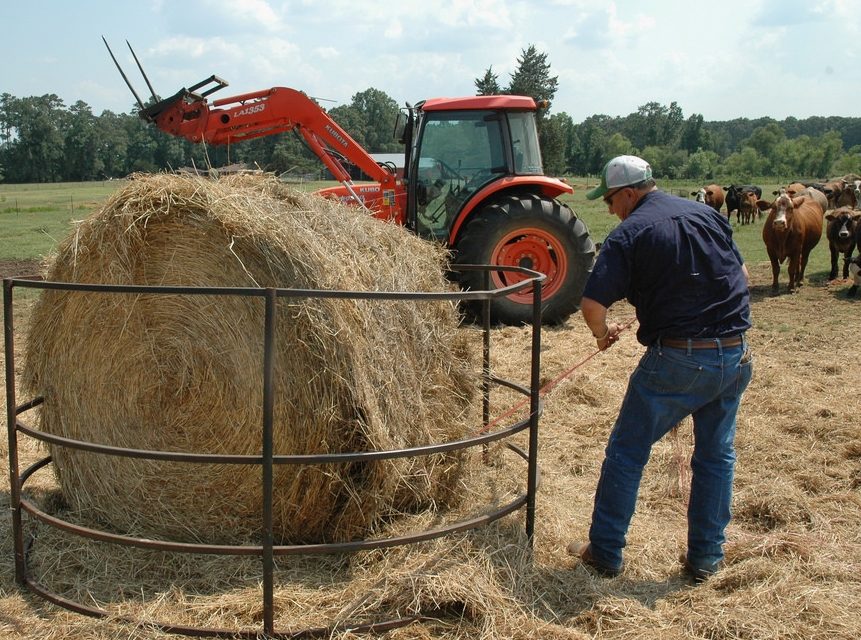by Adam Russell
Producing quality hay takes planning but can be worth the effort, said Texas A&M AgriLife Extension Service experts.
Dr. Jason Banta, AgriLife Extension beef cattle specialist, Overton, said producing high quality hay can eliminate the need for protein and energy supplementation for beef cattle during the winter.
Dr. Vanessa Corriher-Olson, forage specialist, Overton, said improving Bermuda grass quality can be as easy as correctly timing fertilizer applications and cuttings.
Corriher-Olson said most producers in East Texas don’t maximize the potential of their hay fields because they focus on quantity.
“They’re thinking about producing the most bales possible,” she said. “But by fertilizing and harvesting the pastures at the right time, a producer can optimize quality and quantity.”
Many producers are concerned about protein content in hay, Banta said, but total digestible nutrients, or TDN, the livestock equivalent of calories or energy, is important to the nutritional needs of animals. For Bermuda grass and bahiagrass, low TDN content is often a bigger issue than low protein content.
Corriher-Olson said the challenge for producers is to find the point where TDN levels haven’t declined too much and forage yield is acceptable.
Catching Bermuda grass stands during the right window, three to five weeks between cuttings, dependent upon rainfall and sunny days, is the most important factor to produce hay with higher TDN concentrations, she said.
Forage variety choice is also a consideration, she said, as is the time of the season during which the cuttings are done.
Banta said many producers consider the first cutting low quality because it typically includes winter grasses and weeds. But the first cutting is typically the hay with the best nutritional value for cattle.
“A lot of producers think the second and third cutting are the best because they look good, but they are usually the lowest in nutritional quality,” he said. “As temperatures rise throughout the season, plants produce more lignin and that reduces digestibility.”
Fertilization is also a major component in producing quality hay, Corriher-Olson said.
Nitrogen fertilizer should be applied as warm-season grasses start actively growing, she said.
She recommends an application of 50-60 pounds of nitrogen per acre as grasses become active and between each cutting.
Corriher-Olson also recommends applications of phosphorus and potassium based on soil tests and yield goals to improve production.
“It takes 50 pounds of nitrogen, 14 pounds of phosphorous and 42 pounds of potassium to produce 1 ton of quality Coastal Bermuda grass,” she said. “But you should always base applications on soil samples.”
Banta said producers should use ammonia nitrate fertilizer ideally, because applications are not dependent upon the forecast. Urea fertilizer requires that producers pay more attention to the forecast to make sure the application provides nitrogen to the soil effectively. The goal for providing nutritional hay for beef cattle is to produce bales with 12 percent protein and 62-63 percent TDN, Banta said.
“Producing hay that meets the nutritional requirements of beef cows during winter can eliminate any need for supplements whether the cows are dry or nursing,” he said.





